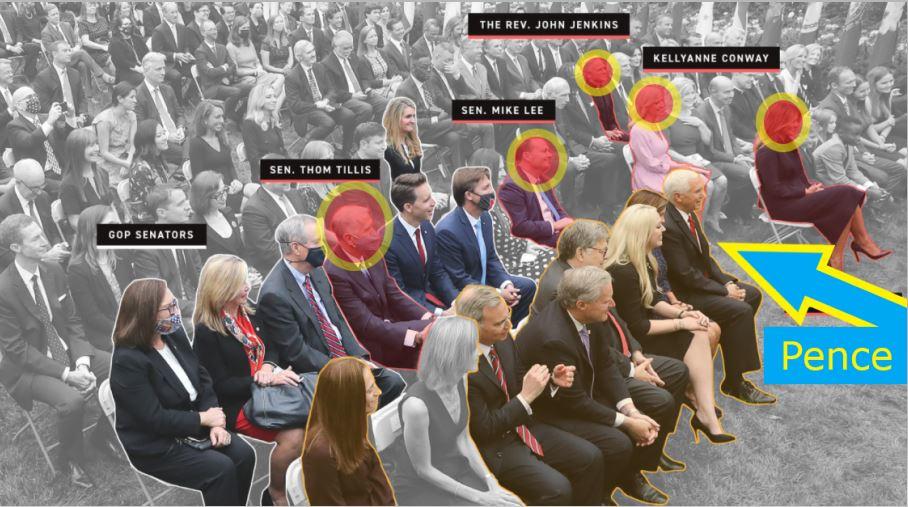While the mainstream media was quick to demonize White House senior advisor Jared Kushner’s effort to open a back channel with Russia, they conveniently ignore Hillary Clinton’s use of the Clinton Foundation as an illegal back channel while she headed the State Department.
In addition, past presidents have regularly used back channels to further relations with, and prevent military conflict with, adversarial countries.
The back channel revelation, first reported by the Washington Post on Friday, has prompted mainstream media outlets like Politico to suggest Kushner is “reassuring people that he’s not going to resign, while colleagues question whether he can survive politically.”
CNN made reference to Kushner’s “worst week in Washington,” while Representative Adam Schiff, the ranking member on the House Intelligence Committee, called for a review of Kushner’s security clearance and establishment #NeverTrump conservative Charlie Sykes suggested the back channel revelation “raises the threat level exponentially” for President Trump.
While quick to demonize Kushner, the mainstream media are quick to ignore then-Secretary of State Hillary Clinton’s use of the Clinton Foundation as an illegal back channel to funnel donations to the foundation in exchange for favors.
The Clinton Foundation received between $1-5 million from the Walton family, the owners of the retail giant Walmart, while Secretary Clinton lobbied the Indian government to reform their foreign direct investment policies to benefit American retailers like Walmart.
While his wife was Secretary of State, former President Bill Clinton received nearly $1,175,000 in fees for three speeches in the United Arab Emirates (UAE). In return, the Clinton State Department promoted two conferences to bring foreign commercial investment to Dubai.
Bill Clinton received speaking fees totaling over $500,000, while the Clinton Foundation received four donations totaling $2.35 million, from the chairman of a Russian company seeking State Department approval to acquire a Canadian company involved in mining uranium in the United States.
Scott Olson, a retired FBI agent involved in counterintelligence operations, suggested Kushner’s actions were unprecedented as previous attempts to create back channels only involved low-level staffers.
“First, he is not seeking a back-channel for a low-level staff exchange,” he said. “He wants high-level direct-contact communication. This is extremely dangerous because it results in verbal (and therefore undocumented and unwitnessed) agreements, which are binding on governments.”
“Free governments do not work this way. They can’t. If they do, they are no longer free.”
Olson’s assertion is completely inaccurate, as there are numerous documented efforts by previous presidential administrations to create back channels using high-ranking administration officials and advisors.
In the aftermath of June, 2009 military coup that ousted Honduran President Manuel Zelaya, a leftist seen as a threat to the Honduran political establishment and American corporate interests, then-Secretary of State Hillary Clinton suggested using a longtime confidant, Lanny Davis, as a back-channel to Roberto Micheletti, the newly appointed Honduran interim president.
Davis, who served as an advisor to the Clintons during the Monica Lewinsky scandal, was serving as an advisor to a group of prominent Honduran businessman at the time of the coup.
E-mails released by WikiLeaks revealed former President Bill Clinton attempted to serve as a back channel to both Greek Prime Minister Alexis Tsipras and German Chancellor Angela Merkel during negotiations on the country’s future with the Eurozone.
A list of talking points was provided by White House chief of staff Denis McDonough to Amitabh Desia, the foreign policy adviser to former President Clinton. Two days after the talking points were provided to Clinton, Greece received an 86 billion euro bailout in exchange for committing to further austerity measures.
As President Nixon prepared to travel to Moscow for a summit with Soviet General Secretary Leonid Brezhnev in 1972, then-National Security Advisor Henry Kissinger colluded with Soviet Ambassador Anatoly Dobrynin to keep Secretary of State William Rogers unaware about secret discussions between the Soviets and the White House.
Soviet-era documents released by the State Department in 2007 described Dobrynin’s thoughts on the meeting with Kissinger, calling the meeting a “unique situation when the Special Assistant to the President secretly informs a foreign ambassador about what the Secretary of State knows and does not know.”
Prior to his victory in the 1968 presidential election, Nixon reportedly dispatched Robert Ellsworth, a longtime aide and personal friend, to relay Nixon’s thoughts on non-profileration and geopolitical issues to Soviet Ambassador Anatoly Dobrynin and Soviet Charge d’Affaires Yuri Cherniakov.
The Kissinger-Dobrynin back channel has been widely credited with bringing about a period of détente between the United States and the Soviet Union.
Incoming President John F. Kennedy dispatched his brother, Robert Kennedy, to establish a back channel with Russia by meeting with one of Moscow’s agents in the United States, who worked undercover as a journalist for Izvestia.
Watch: Alex breaks down how previous US presidents have set up back channels with Russia going back to the Cold War.
Hayden caught in huge anti Trump lie concerning Russia! We must expose this dirty bag! https://t.co/HK7J6vjpkm
— Alex Jones (@RealAlexJones) May 28, 2017
The Emergency Election Sale is now live! Get 30% to 60% off our most popular products today!



